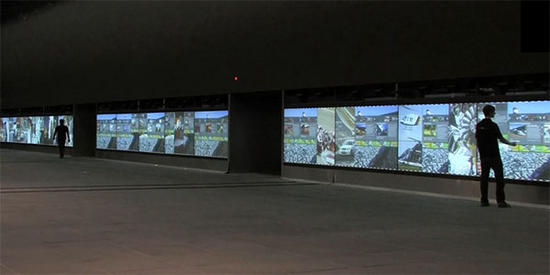Part 1 of 3
nomad
no•mad
noun ˈnō-ˌmad, British also ˈnä-
Latin nomad-, nomas member of a wandering pastoral people, from Greek, from nemein
First Known Use: 1579
As is relates to personal-digital interaction, in my mind, the desktop computer passed away in 2009. Thanks to a generous cocktail of 3G & 4G networks, plentiful data packages, real smartphones and great app environments, people are putting their PCs in sleep mode and heading out into the sunshine in droves to have fun, including me. Case in point: I have a beautiful 24” iMac that I rarely wake up. I used to spend a lot of time behind it. However, now, sans creating a personal document or editing digital photographs, almost every personal digital task for which I used my desktop, I can now tackle with my iPhone. Most likely my iMac will not be the last desktop I ever buy, but – for the moment – it sure feels like it could be.
Equipped with well-connected devices, people are pushing away from the personal computer during their leisure time. Smartphones and other connected devices are changing evenings, weekends and all around free time for hundreds of millions of people. Whether it’s a friend sharing a laugh with fifty friends or a sleepy IT professional in Abbottabad, Pakistan tweeting about a helicopter flying overhead at 1AM, it’s safe to say that we, as humans, have crossed a special mark on the digital culture timeline. We are now free to move about the world to engage and respond to people, things and brands and in real time, from any number of connected-device applications.
Fact: AT&T reported that traffic grew 30-fold from 3Q 2009 to 3Q 2010.*
The vision of the digital global village has become a reality, thanks in no small part to the connectivity features and benefits of social channels such as Facebook and YouTube. The global landscape feels more tangible now – exploration more attainable. We find ourselves thinking about places our parents never even knew existed and we are taking opportunities to push ourselves and our friends even further to explore this landscape. Connections always seem to have a way of driving curiosity, building confidence. And now that we have each experienced the opportunities that this super-connected culture affords, we will inevitably want more of it – the convenience of it, everywhere. Personal devices will certainly continue to optimize and better themselves, but what’s next?
It was no small feat reaching the current state of digital affairs. Perhaps given a bird’s eye view of the past and present, we can start to see the trajectory of our future. The following list highlights my personal observations of the key technology adoption and general culture ramping that brought us here. Clearly the points are anecdotal, but hopefully the observations will paint a picture of progression:
- 1980′s – The Large Office – marked by a focus on activities in research, defense, manufacturing, corporate business and entertainment. Think mainframes.
- 1990′s – The Small Office – marked by the commercialization of the internet and the interconnectivity of businesses and commerce. New business paradigms emerged and wise businesses shifted. I also call this the digital training decade, as small businesses and users were educated in hardware, software and digital etiquette.
- 2000′s – The User – marked by a focus on wireless networks, general technology optimization, communities, politicization and interpersonal communications, as well as the digitization of entertainment. New business models continued to emerge, monetize and unwise businesses were left behind as challenger brands prevailed using smart digital strategies. With massive layoffs in the late 2000′s, social networks grew in importance and relevance.
- 2010′s – The Connected Environment – will be marked by a focus on digitally-driven interactions in the external environment, such as device refinement and customization, out-of-home billboards, concierge systems (automobiles, vending machines, location-based sales), near-field communications and à la carte entertainment. Never before have businesses been driven by consumer tastes, wallets and information consumption patterns to the extent that they are now.
Companies and consumers can expect the current decade to be marked by out-of-home digital integration and more extensive environmental interaction; whereby connectivity is embedded in just about anything that makes sense – and plenty of things that make no sense at all.
Now that we’ve established the marketplace’s shift to the connected environment, in Part 2 of this series I’ll share mobile consumption statistics and detailed insights that reflect the importance of transforming your company into a brand that resonates with consumers, connected devices and external environments.
// Christopher Jones
*Cisco Visual Networking Index: Global Mobile Data Traffic Forecast Update, 2010–2015
Repost with permission. Written on April 15, 2011 for Think Interactive.

